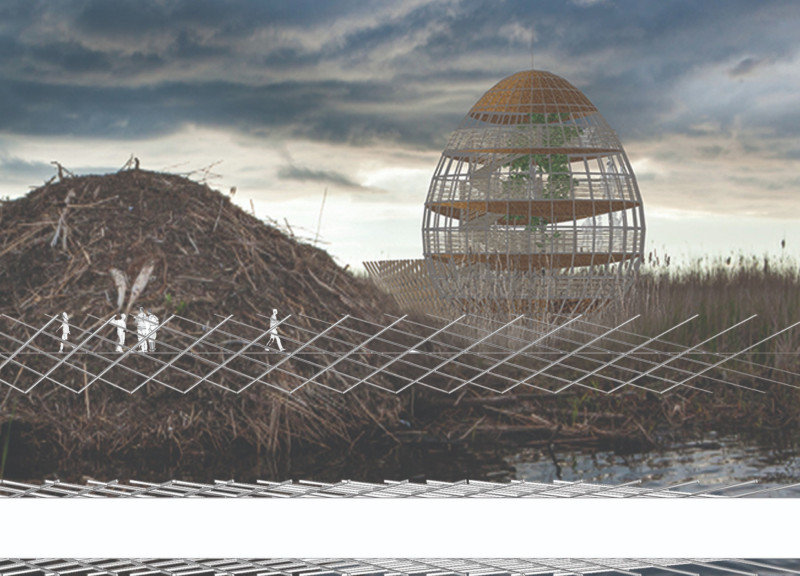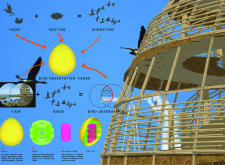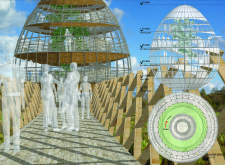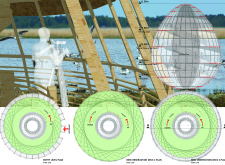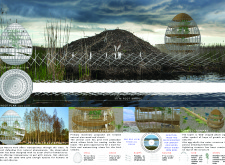5 key facts about this project
### Project Overview
Located within a nature park renowned for its diverse avian population, the Bird Observation Tower is designed to enhance human-bird interactions while promoting ecological awareness. The structure integrates functional and artistic elements, resulting in an innovative space that serves as both an observation point and a habitat for local bird species.
### Structural and Spatial Strategy
The architecture features a distinctive egg-shaped exterior, constructed with a lightweight, transparent lattice framework that allows natural light to permeate the structure and provides a sense of openness. A central hollow core facilitates bird nesting, enabling a direct interaction between wildlife and visitors. Multiple observation decks, equipped with ramps for accessibility, offer unobstructed views of the surrounding wetlands, enhancing the experience for all visitors. The highest viewing deck is specifically designed for optimal birdwatching, allowing for observation of migratory patterns and nesting behaviors.
### Material Considerations
The tower employs a range of locally sourced materials, including natural pine wood for its durability and aesthetic appeal, thatch for roofing to provide thermal insulation and camouflage, and steel cables for structural integrity. Select sections incorporate glass to maximize visibility while maintaining the transparency theme. This careful selection of materials not only enhances the aesthetic coherence with the landscape but also prioritizes sustainability by reducing transportation emissions and supporting local ecosystems.
### Environmental Integration
Emphasizing ecological sensitivity, the design minimizes its visual and physical footprint within the park. The incorporation of a hollow core and strategic native plantings promotes biodiversity, directly supporting local wildlife. This approach is complemented by the use of sustainable materials, reinforcing the intent to harmonize the structure with its natural surroundings while fostering interaction between humans and nature.


